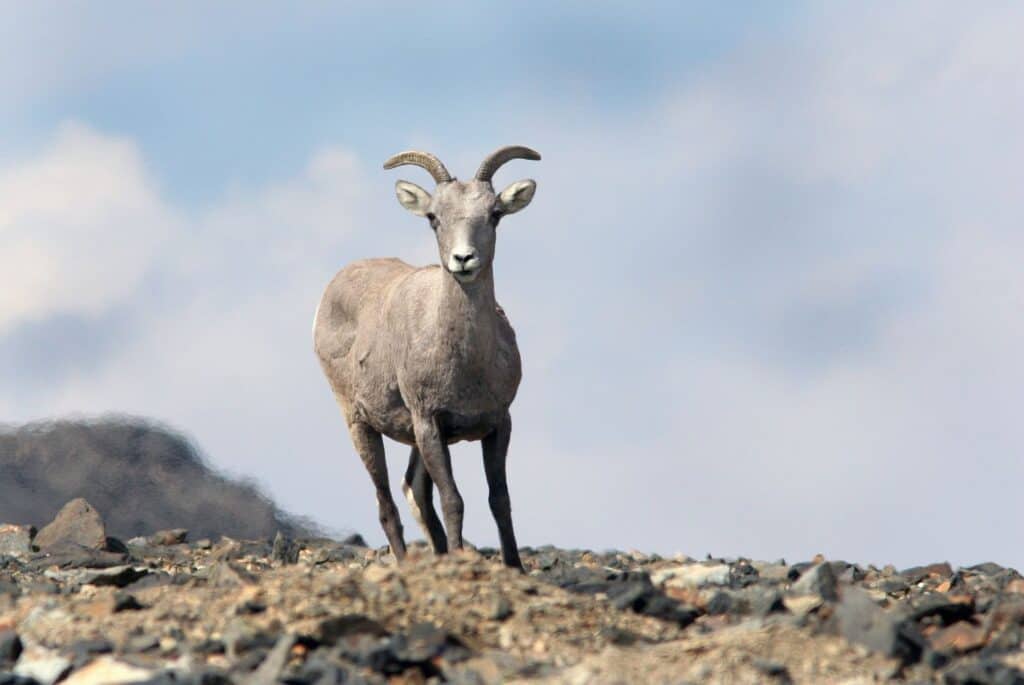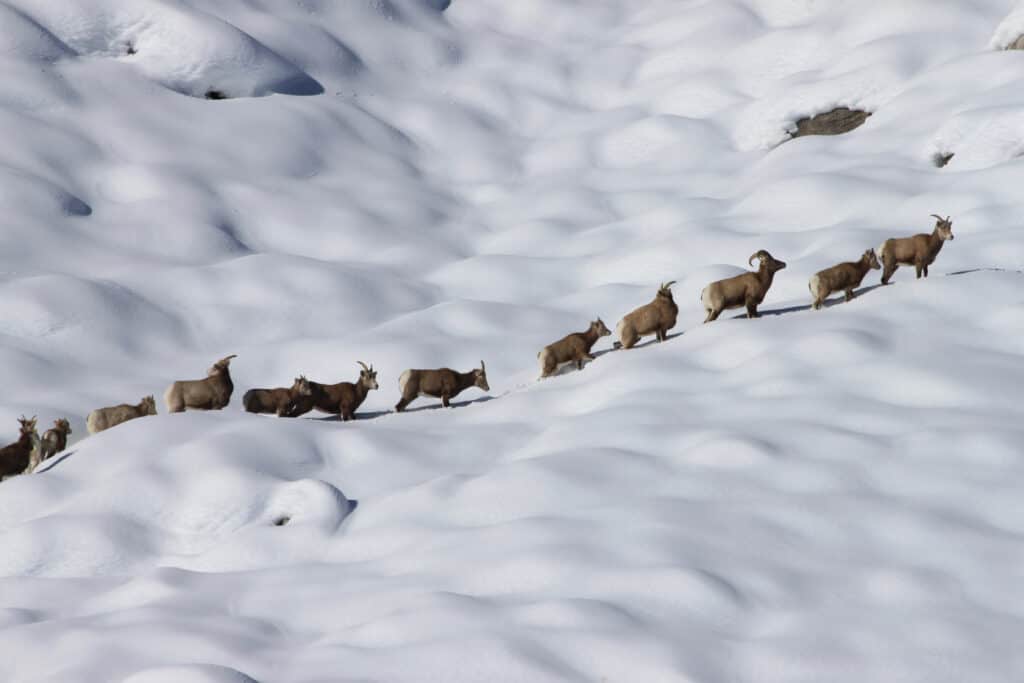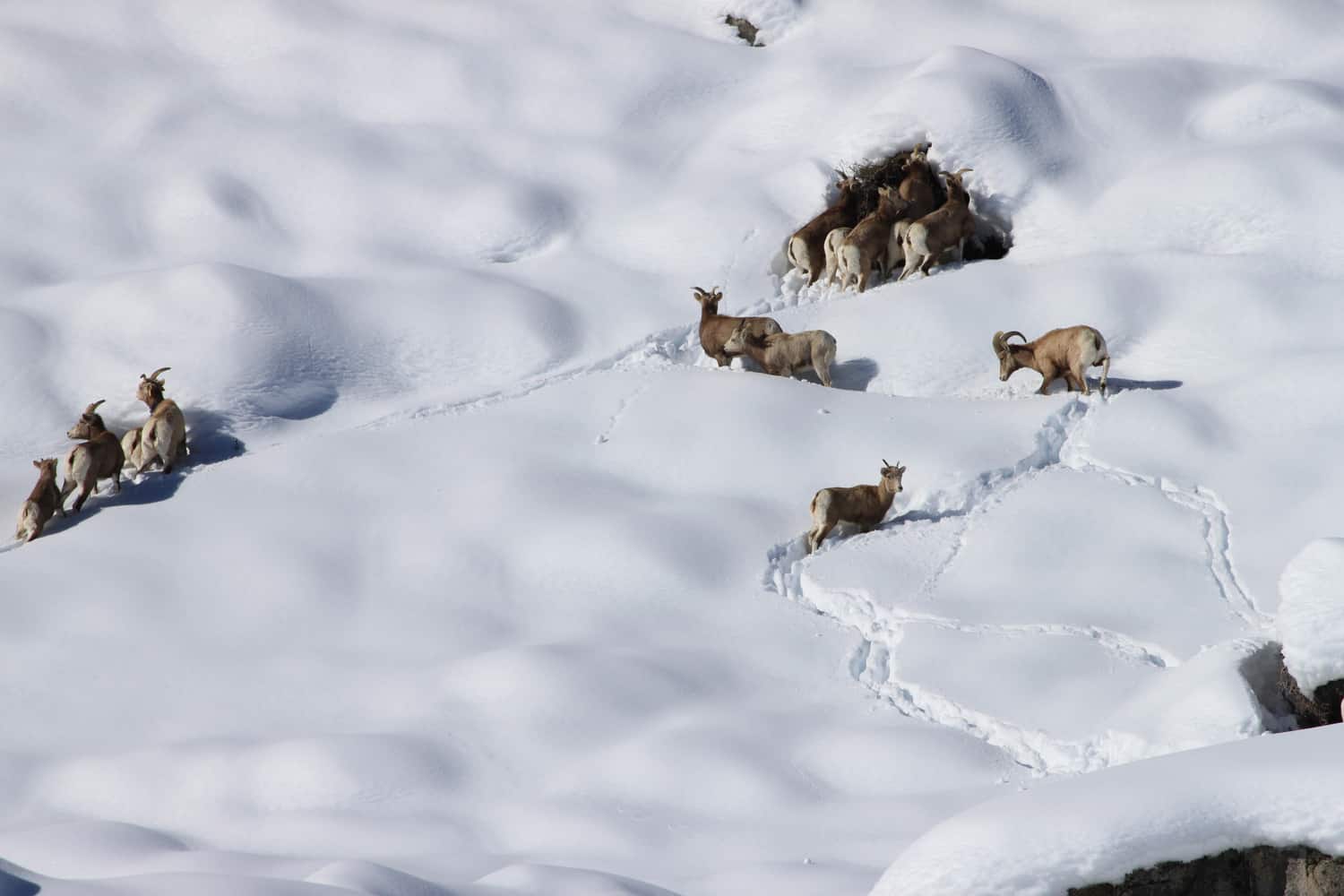Share this article
Wildlife Featured in this article
- Sierra Nevada bighorn
TWS2022: Backcountry skiing pushes out endangered bighorns
Bighorns avoid backcountry ski areas during the winter
Backcountry skiing isn’t usually the kind of activity associated with a large ecological footprint. But preliminary research shows that this winter recreation may push an endangered subspecies of bighorn sheep out of some of their winter habitat.
Jaron Kolek has always been an outdoor activity enthusiast, enjoying activities like biking, climbing and hiking. He started to wonder about the impacts of some of these pursuits. Some research has shown that even low levels of tourism can affect the presence of wildlife in very remote parks.
As a master’s student at the University of Wyoming, Kolek decided to look at the impacts of backcountry skiing in California on Sierra Nevada bighorn sheep (Ovis canadensis sierrae), a subspecies considered endangered by the U.S. Fish and Wildlife Service. They are only found in the Sierra Nevada Mountains in California that they are named after.
In ongoing research presented at The Wildlife Society’s 2022 Annual Conference in Spokane, Kolek and his colleagues studied sheep in the northernmost end of this range, between the town of Lee Vining and Yosemite National Park. The area is popular among backcountry skiers, who hike into the area to ski down mountains.

Using data from Strava, a phone app and website that tracks users’ physical activity, the researchers could tell where people that use the app have been over the year. That information revealed hot spots of activity from back country skiers.
Kolek and his colleagues then gathered data from GPS collars the California Department of Fish and Wildlife fitted on Sierra Nevada bighorn sheep in the area from 2013 to 2022 as part of ongoing monitoring efforts on the endangered species.
That data revealed what sheep do when there is no skiing. “Unsurprisingly, Sierra bighorn avoided areas with high snow cover and areas further from escape terrain,” Kolek said.
They changed their habitat use patterns during ski seasons, though. “Sheep are avoiding the areas used by backcountry skiers, but when they select their home ranges, they are selecting areas that are close to skiing,” Kolek said.

While it isn’t clear why they select home ranges near skiers, it’s possible that they don’t have anywhere else to go, Kolek said. “Sheep that winter in the alpine rely on areas where snow has been scoured away by wind or melted off, which is relatively rare on the landscape.”
But the overall pattern of them avoiding backcountry skiing areas is problematic, he said. Bighorn sheep operate on a strict energy budget, building up fat reserves during the summer and fall in order to last through the winter months. If they are forced to move more to avoid skiers, they may burn through their fat reserves quicker and be relegated to areas of poorer quality. As a result, they may find it harder to replenish those reserves.
It’s also possible that during harsh winters, the bighorns tolerate skiers more than in years where conditions are milder, Kolek said. But further research would be needed to confirm this.
Kolek said that wildlife managers may want to consider how backcountry skiing interacts with bighorn home ranges, given these findings.
Potential ways to mitigate the issue might be to give bighorn sheep more space during harsh winters, or they could designate specific routes for backcountry skiers to limit the overall impact to sheep.
Header Image: Sierra Nevada bighorn sheep tend to avoid areas used by backcountry skiers. Credit: Steve Yeager








